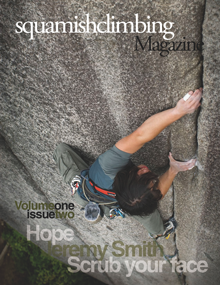We are please to have local physiotherapist William Bateman as a guest contributor for this training article.
Last week we discussed how you can start to integrate your core stabilizers with a basic exercise like the deadhang. Check out the video and article below for a quick recap. In integrating your shoulder and anterior trunk muscles within your dead-hang you’re training static core stability.
Click here for last week’s article
Consider static stability to be any exercise that engages your stabilizers without additional movement generated by your prime movers (the larger muscles in your body responsible for moving your limbs). Another example of a static stability exercise would be the classic plank exercise. You move your body into a neutral posture and hold that position. The stabilizers stay on for as long as you hold that position.
In climbing, you need both static and dynamic stability. Dynamic stability is your ability to control the joints in your body while the prime movers are carrying you up the wall. In other words, stability through movement. Holding a plank or simply training your stabilizers on a hangboard isn’t enough.
Consider last week’s climber who has just thrown for a dyno and their hands have landed on the finishing holds. As their body falls back towards the ground, the prime movers are working to slow the momentum of their body while the stabilizers are working to keep the joints safe. This is an example of dynamic stability. You train dynamic stability by keeping your stabilizers engaged through movement-based exercises.
The pull-up is a great place to start and a good means of progressing the hangboard exercise. Check out the video to better understand how you can start to train dynamic core stability through pull-ups.
William Bateman, PT, MScPT, BScKin
Physiotherapist and Owner
Project Physio
Special thanks to Will for the video and tips! Will is a Physiotherapist practicing out of the Ground Up Climbing Centre and Squamish Integrated Health. You can see more of his videos here or visit his website at www.ProjectPhysio.com












